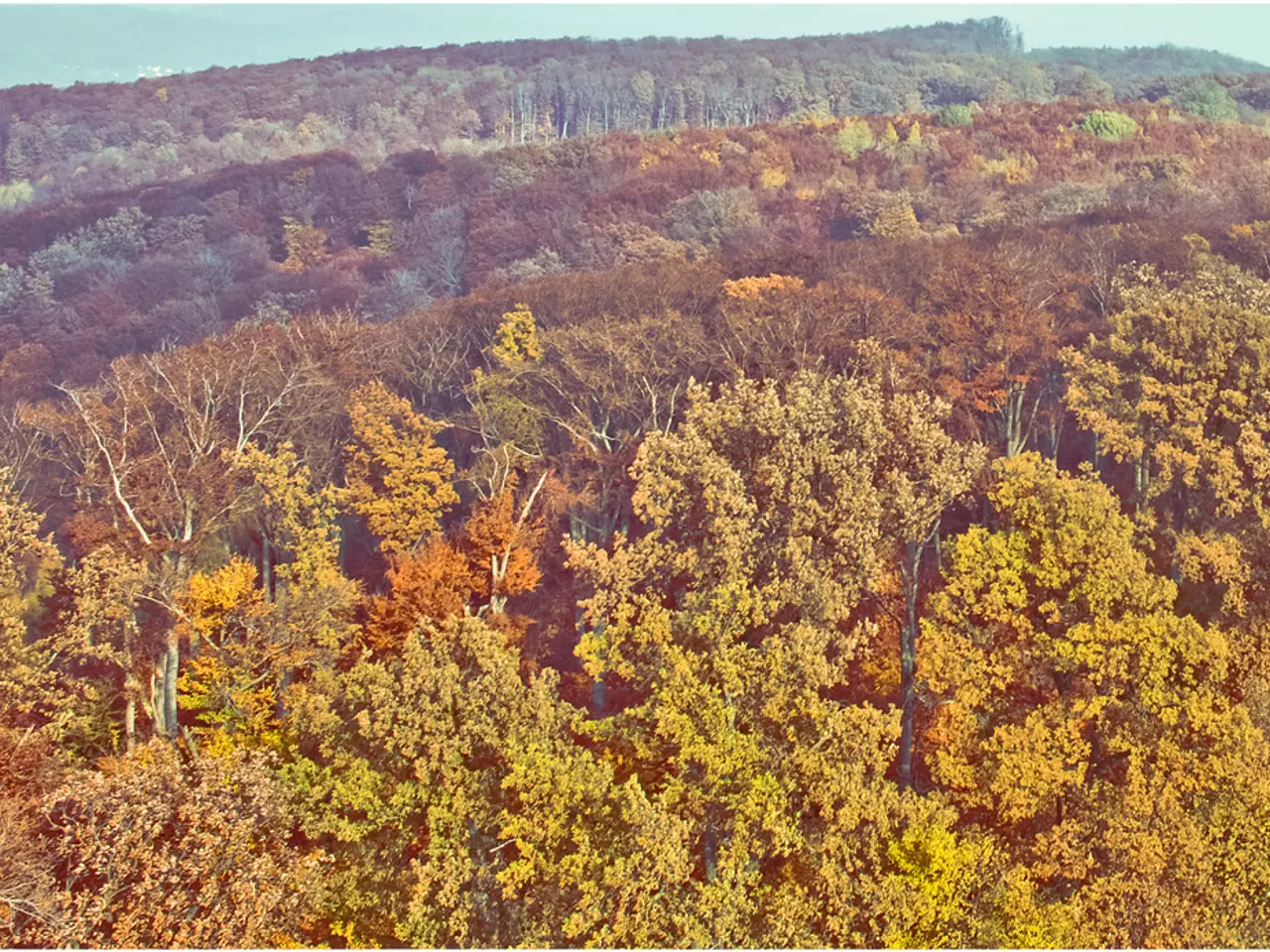The Importance of Appreciating Every Tree
In urban areas across the globe, trees play a crucial role in improving the quality of life for both people and the environment. Planting and maintaining trees in our cities and towns provides a myriad of environmental, health, and economic benefits.
Environmental Benefits
Urban trees work tirelessly to purify the air, acting as natural air filters. They absorb pollutants such as nitrogen oxides (NO2), sulfur dioxide (SO2), dust, soot, and smoke, significantly reducing pollution exposure[1][3][4]. Trees also contribute to climate change mitigation by sequestering 10 to 40 kg of CO2 annually per tree[1][3].
Another significant environmental advantage is temperature regulation. Trees reduce the urban heat island effect by shading buildings and pavements and through transpiration, which cools the air and lowers ground-level ozone formation. This cooling effect reduces heat stress during summer and decreases energy consumption for air conditioning[1][2][4].
Moreover, tree root systems stabilise soils, preventing erosion and landslides, while they absorb excess rainwater, reducing the risk of urban flooding and replenishing groundwater[2][5]. Trees also contribute to biodiversity by providing habitat, food, and shelter for various wildlife species, fostering urban biodiversity and ecological balance[2][3].
Health Benefits
Exposure to trees and green spaces has been shown to lower stress, anxiety, and depression, offering therapeutic effects that enhance mindfulness and psychological resilience[2]. Furthermore, tree-lined streets help calm traffic by creating a visual narrowing of streets, encouraging slower vehicle speeds, which enhances pedestrian and cyclist safety. This, in turn, fosters a sense of community pride and cohesion[2][5].
Economic Benefits
The economic benefits of urban trees are far-reaching. By cooling urban areas, trees reduce the demand for air conditioning, lowering energy costs and associated greenhouse gas emissions[1][2]. Aesthetic improvement from trees increases property values and attracts visitors, benefiting local economies[2].
In addition, by managing stormwater and reducing flood damage, trees can lower urban infrastructure maintenance costs[2][5]. Finally, the presence of trees can lead to reduced infrastructure costs due to their role in absorbing carbon dioxide. A single tree can absorb more than 48 pounds of carbon dioxide from the atmosphere in a year[6].
In summary, urban trees improve air quality, mitigate climate change, regulate temperatures, promote mental and physical health, enhance safety, support biodiversity, and offer economic advantages such as energy savings and increased property values[1][2][3][4][5]. Let's continue to plant and maintain trees in our cities and towns to reap these numerous benefits and create greener, healthier, and more sustainable urban environments.
[1] Nowak, R. M., & Crane, P. (2011). Urban Forests and Trees: Beyond the Planting Zone. Island Press. [2] Ulrich, R. S. (1984). The influence of nature and architecture on the affective responses of hospitalized psychiatric patients. Journal of Environmental Psychology, 4(3), 125-141. [3] McPherson, J. D., & Kuby, S. M. (2015). Trees and Forests: An Introduction to Forestry. CABI. [4] Nowak, R. M., & Crane, P. (2011). The benefits, costs, and management of urban forests and trees. Urban Forestry & Urban Greening, 10(3), 157-166. [5] Tzoulas, C., & Katsoulis, P. (2012). The economic benefits of urban forests. Urban Forestry & Urban Greening, 11(4), 365-371. [6] USDA Forest Service. (n.d.). Trees Are the Lungs of Our Land. Retrieved from https://www.fs.fed.us/wildflowers/trees/benefits/air.shtml
- To combat climate change, one can support online nurseries specializing in environmental science, as they offer trees that can sequester up to 40 kg of CO2 annually.
- For those with a home-and-garden interest, indoor plants also contribute to air purification, absorbing pollutants like NO2 and SO2 in a domestic setting.
- Progress in lifestyle choices towards ecofriendly practices can include planting trees in urban areas to help mitigate the urban heat island effect and reduce energy consumption for cooling.
- The environmental-science community encourages the cultivation of diverse species in home-and-garden settings and urban gardens, as this practice supports local biodiversity and ecological balance.




